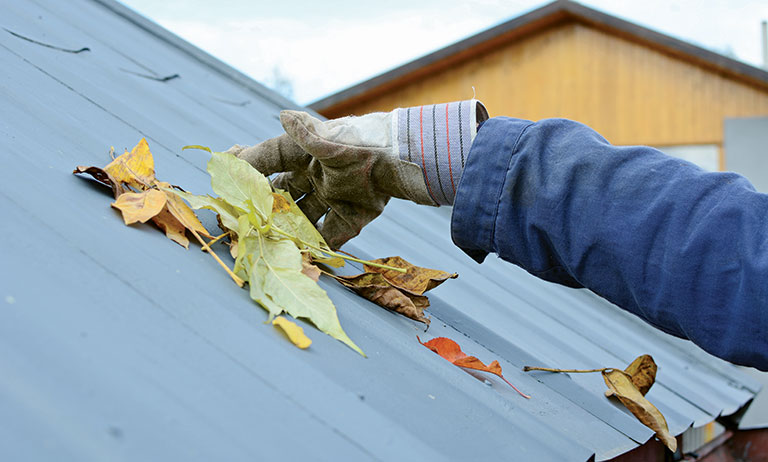Gutters are an essential part of your home’s exterior, directing rainwater away from your roof and foundation to prevent water damage. However, one of the most common causes of gutter clogs is tree debris. Fallen leaves, twigs, seeds, and even branches can easily accumulate in your gutters, obstructing the water flow and potentially leading to expensive repairs. Fortunately, there are several strategies homeowners can use to prevent tree debris from clogging their gutters and keep the system functioning smoothly.
In this article, we’ll explore the best methods to prevent tree debris from causing gutter blockages and discuss the importance of proactive maintenance to safeguard your home.
1. Regular Gutter Cleaning
The first line of defense against tree debris in your gutters is regular cleaning. While this might seem obvious, many homeowners overlook the importance of consistent maintenance.
- Clean Your Gutters Twice a Year: Aim to clean your gutters at least twice a year—once in the spring and once in the fall. Fall is especially important because of the heavy leaf drop, while spring cleaning helps remove the debris that may have accumulated during the winter months.
- Check After Storms: If you’ve had a particularly windy or stormy period, it’s a good idea to inspect your gutters more frequently. High winds and heavy rains can shake loose tree branches, leaves, and twigs, which can quickly lead to clogs.
- DIY or Professional Cleaning: If you’re comfortable with heights, you can clean your gutters yourself. However, for multi-story homes or those with high trees, hiring a professional gutter cleaning service may be safer and more effective.
Regular cleaning ensures that you stay ahead of the debris buildup and prevents major clogs that could cause water damage.
2. Install Gutter Guards
One of the most effective ways to prevent tree debris from entering your gutters is to install gutter guards. Gutter guards are protective covers that sit over your gutters and filter out large debris, like leaves and twigs, while allowing water to flow freely through.
- Mesh Gutter Guards: These are made of fine mesh screens that block leaves and larger debris but allow rainwater to pass through. Mesh guards are ideal for homes surrounded by trees, as they keep even small leaves from entering the gutters.
- Surface Tension Guards: These gutter guards work by using surface tension to channel water into the gutter while keeping debris on top. They’re low-maintenance and can handle a large amount of rainfall.
- Brush Gutter Guards: These are long, cylindrical brushes that sit inside the gutter. The bristles act as a barrier, preventing debris from settling in while allowing water to flow around them. They’re particularly useful for homes with pine needles or small twigs.
- Solid Covers: Solid gutter covers block almost all debris from entering the gutters. They work best in areas with heavy rainfall and when paired with a good drainage system.
While installing gutter guards is a more upfront investment, it greatly reduces the frequency of gutter cleaning and prevents debris buildup in the long run.

3. Trim Nearby Trees
Another effective way to reduce tree debris in your gutters is by trimming back trees that hang directly over your home. By keeping branches away from the roof and gutters, you can minimize the amount of leaves, twigs, and branches that fall into the gutters.
- Trim Overhanging Branches: Ensure that branches are at least 10-15 feet away from your roofline. This will minimize the chances of large branches or leaves falling directly into your gutters.
- Cut Dead or Weak Branches: Dead, damaged, or weak branches are more likely to break off and fall during storms, adding to gutter clogs. Regularly pruning these branches helps prevent unexpected debris accumulation.
- Time Your Pruning: The best time to trim trees is during the dormant season (late winter or early spring). This ensures that you’re removing any dead wood before it can cause problems and allows the tree to recover quickly in the spring.
By managing the trees around your home, you can prevent large amounts of tree debris from collecting in your gutters, reducing the need for frequent cleaning.

4. Use a Gutter Cleaning System with a Telescoping Pole
For homeowners who are unable to regularly clean their gutters or want to avoid climbing a ladder, using a gutter cleaning system with a telescoping pole can be a great solution. These systems allow you to reach your gutters safely from the ground, making it easier to clear tree debris from hard-to-reach areas.
- Telescoping Gutter Cleaning Tools: These tools often come with a long pole that extends to reach gutters at various heights. Many models include attachments like scoops or brushes to help dislodge leaves, twigs, and branches.
- Leaf Blowers with Gutter Attachments: For homes with significant leaf accumulation, a leaf blower with a special gutter cleaning attachment can help clear out the debris quickly and efficiently. This method is especially effective for lighter, dry leaves and small twigs.
- Wet/Dry Vacuums: Some vacuums are designed specifically for gutter cleaning and can be used to suck up any debris without the need for manual removal. These systems are particularly useful for homes surrounded by heavy tree cover.
A gutter cleaning system with a telescoping pole or vacuum is an excellent option for homeowners who want to stay on top of gutter maintenance without dealing with the dangers of climbing ladders.
5. Direct Water Flow Away from Your Home
Ensuring that your gutters are properly aligned and directing water away from your home can also help reduce the impact of tree debris. Poorly functioning gutters that allow water to overflow or pool near the foundation can exacerbate the effects of debris buildup.
- Check Gutters for Proper Slope: Gutters should have a slight downward slope toward the downspouts to ensure water flows freely. If the slope is off, water can pool in certain areas, encouraging debris to settle.
- Ensure Downspouts Are Clear: Keep your downspouts clear of debris so that water doesn’t back up into the gutters. You can install downspout extensions to direct water away from your home’s foundation.
- Consider Gutter Downspout Strainers: Strainers placed in your downspouts can help catch any large debris that manages to make it past the gutter guards or cleaning process, preventing clogs from forming in the downspout.
By making sure that your gutter system is in proper working condition, you’ll help avoid the kind of water overflow that can cause additional debris to collect in your gutters.

6. Clean and Inspect Your Roof
Sometimes, tree debris that lands on the roof will make its way into the gutters over time, especially if the roof is not cleaned regularly. Keeping your roof free of excess debris can help reduce the amount of material that ends up in your gutters.
- Remove Leaves and Twigs from Your Roof: Use a roof rake to remove any leaves, twigs, or other debris that have collected on your roof. This will reduce the chances of these materials falling into the gutters when it rains or when the wind picks up.
- Check Roof Vents: Roof vents can trap debris, which may eventually spill into your gutters. Inspect your roof for any debris accumulation around vents, skylights, and chimneys, and remove it as needed.
Keeping your roof clean ensures that fewer materials end up in your gutters and reduces the risk of clogs over time.
Conclusion
Preventing tree debris from clogging your gutters requires a combination of proactive maintenance, tree management, and the right tools. By regularly cleaning your gutters, installing gutter guards, trimming overhanging trees, and keeping your roof free of debris, you can significantly reduce the amount of tree debris that accumulates in your gutters.
Investing in these preventive measures will not only help you avoid costly gutter repairs but also protect your home from water damage. With the right approach, you can keep your gutters clear and functioning efficiently year-round.

